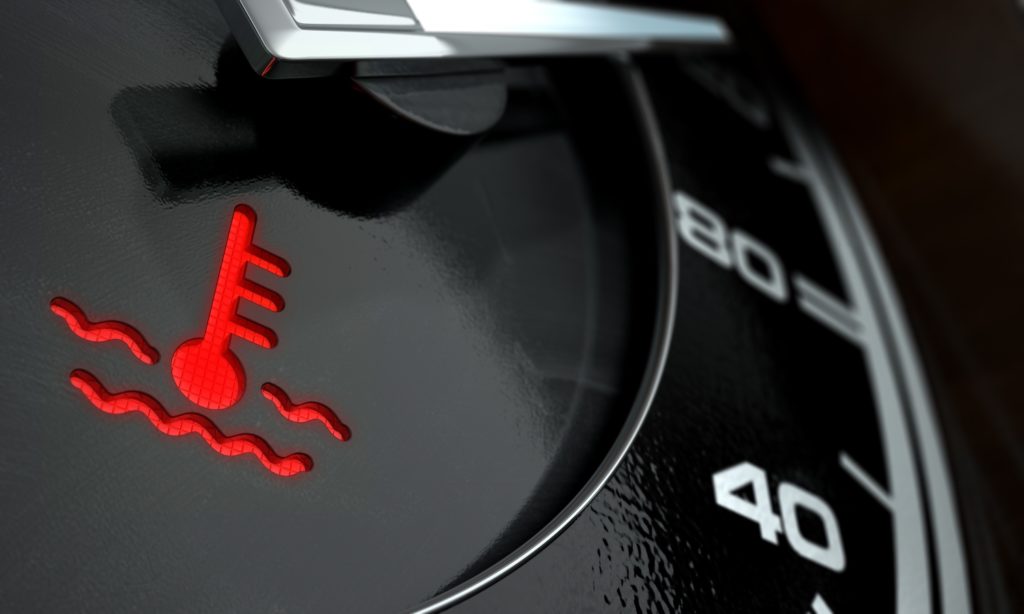News
Coolant Temperature Warning Light: What It Means, Causes, and How to Handle It
Overview
- The engine coolant over-temperature light signals that your engine is overheating.
- Common causes of engine overheating include coolant leaks, malfunctioning cooling system components (like the water pump or fans), and internal engine problems.
- Never drive with the temperature light on overheating can cause major engine damage, such as blown head gaskets or cracked engine blocks.
The engine coolant over-temperature warning light is one of the most critical indicators your vehicle can display. Ignoring it can lead to expensive internal engine damage and costly repairs. If you see the warning light, it’s important to act immediately.
What Does the Engine Coolant Over-Temperature Light Mean?
Not all vehicles have the same type of warning light, but if your car does, it’s crucial to understand what it’s telling you. Depending on your car’s make and model, the temperature warning may appear as a thermometer symbol in coolant or as a warning message on your dashboard. Either way, the message is clear: Your engine is overheating.
Normal Coolant Temperature
For most modern engines, the typical coolant temperature range is between 195 and 225°F. If your coolant temperature exceeds this range, it means the engine is overheating and immediate attention is required.

If the engine temperature warning light illuminates on your dashboard, it means your car’s engine is overheating.
Why Is My Coolant Overheating?
Contrary to what you might see in movies, cars don’t overheat for no reason. There’s usually a specific issue causing the temperature to rise, and it’s important to pinpoint the problem to avoid severe engine damage. Here are some common reasons why your engine may be overheating:
Common Causes of Engine Overheating:
- Coolant Leaks
The cooling system in your car is made up of several hoses and components, any of which can develop leaks. When there’s a coolant leak, your engine can lose coolant and begin to overheat. - Failed Thermostat
The thermostat controls the flow of coolant through the engine. If it fails in the closed position, coolant can’t circulate properly, and the engine will overheat. - Broken Water Pump
The water pump circulates coolant throughout the engine. If the pump fails or the drive mechanism is damaged, the coolant flow is disrupted, leading to overheating. - Damaged or Blocked Radiator
The radiator is responsible for releasing heat from the coolant. If it’s damaged or obstructed, it can’t perform its job effectively, causing the engine to overheat. - Faulty Cooling Fans
Cooling fans help maintain airflow through the radiator, especially when idling or moving slowly. If the fan fails, the engine can overheat because the coolant isn’t being cooled down properly. - Internal Engine Problems
Serious internal issues, like a blown head gasket or cracked cylinder heads, can cause coolant to leak into the engine. This can result in overheating and, if unresolved, catastrophic engine failure.
Is It Safe to Drive With the Temperature Light On?
No, driving with the engine temperature light illuminated is extremely dangerous. Continuing to drive with an overheated engine can lead to severe and expensive damage, such as a blown head gasket, cracked block, or damaged pistons.
If the warning light comes on, find a safe place to pull over and turn off the engine immediately. Wait for the engine to cool down before attempting to inspect anything. The heat can cause burns if you open the hood too soon.
What to Do If the Temperature Light Comes On:
- Pull over safely and turn off the engine immediately.
- Do not drive the car further overheating can cause severe damage.
- Call a towing service to get the vehicle to an auto repair shop.
Once your car is safely parked, your mechanic will need to diagnose the issue and fix whatever is causing the overheating. Don’t drive the vehicle until it’s repaired.
Why Does the Temperature Light Flash and Then Turn Off?
If the light comes on briefly when you start your car and then turns off, it’s likely just performing a bulb check to ensure the warning light works. However, if the light stays on after you’ve been driving for a while, it may indicate an actual overheating issue or a faulty temperature sensor.
What Happens if Coolant Gets Too Hot?
Overheating can cause serious damage to the engine. Some of the most common consequences include:
- Blown head gaskets
- Cracked cylinder heads
- Cracked engine blocks
- Damaged valves and pistons
- Scuffed or warped internal components
In extreme cases, overheating can lead to complete engine failure, requiring an entire engine replacement.
How to Fix Coolant Over-Temperature Issues:
If your engine coolant temperature light comes on, the first step is to pull over and turn off the engine. You should then have your vehicle towed to an auto repair shop. The underlying cause of the overheating needs to be identified and repaired. Until the issue is fixed, driving is not recommended, as it can cause irreparable damage to your engine.
Stay vigilant and act quickly if you see the temperature light it could save you from costly repairs and extend the life of your vehicle.
